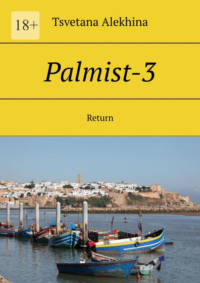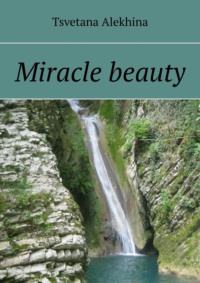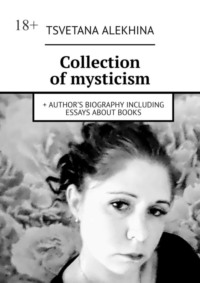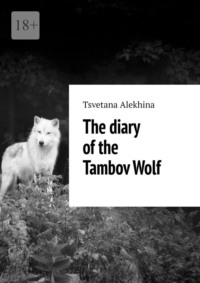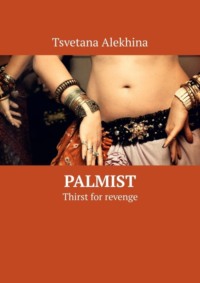
Полная версия
Choosing religion you choose fate
The first publication about the «Veles Book» not the full version appeared in the USSR in 1960. The full version appeared in Russia in 1990 by O. V. Tvorogov and is guided by the typewritten text of Mirolyubov. Yu. P. Mirolyubov is an author on Slavic folklore, artistic works and amateur compositions.
CHAPTER 4
The Baptism of Russia
The period of Russia’s history before the adoption of Christianity did not fit into any «standard» pattern – it was not similar to the primitive communal system, nor to the slave owning, nor to the feudal. Rather it looked like a socialist. In the period before the baptism of Rus, the Russ undoubtedly had their own state and at the same time, there was no class society, in particular feudal. And the disadvantage was that the «classical» Soviet ideology claimed that the feudal class created the state as an instrument of its political domination and suppression of the peasants.
The Old Russian Slavs, they did not accumulate wealth, they did not leave an inheritance, they did not have the meaning of life to make capital, and this was contemptuously censured. And what was valuable? Russians have never sworn by their family, children. And what did they swear by? For example, in the treaty with the Greeks of 907, it is clear that the Russ swore by «their weapons, and Perun, their God, and Hair, cattle god.» Prince Svyatoslav swore by Perun and Volos in the treaty of 971 with Byzantium. The Slavs considered their connection with God, with the Pantheon of Gods, their honor, conscience and freedom to be the most valuable. The Rus despised gold, and one of the treaties with Byzantium and Prince Svyatoslav proves this. If the oath is broken, «let us be golden, like this gold.»
The baptism of Rus was of great importance in Russian history. Pagan beliefs were replaced by a nationwide unified religion. The adoption of Christianity from Byzantium predetermined the future path of Russia’s development as the largest stronghold of Orthodoxy.
The princely power grew, and with it, the need to strengthen the state grew. Disagreement in polytheism did not give unity and weakened the state of Ancient Russia. Despite the assertion of the common Slavic pantheon of gods, the union of tribes was steadily disintegrating. Vladimir Svyatoslavovich understood that a stronger religion was needed, capable of uniting people.
Before the adoption of baptism, paganism flourished in Russia, it was a completely religious system. Christianity cannot be called a completely new form of spiritual life. Prince Vladimir understood that it would be extremely difficult to introduce a completely new and unusual religion into Russia. After all, even before the advent of Christianity in Russia, there was a cult of the god of the Genus, who was a heavenly god, ruled the clouds, breathed life into all living things. In fact, the baptism of Russia gave a sharp impetus to the people from the transition of one religion to another, from polytheism of polytheism, to monotheism, that is, monotheism.
Historian S. F. Platonov believes that the main reasons for the baptism of Russia were economic. It was difficult for the state to subjugate many Slavic communities, Russia was baptized in order to strengthen the role of the state and subjugate a completely cohesive people. One of the reasons is trade, Christian peoples did not want to communicate and trade with pagans, Russia risked remaining isolated. With acceptance Russia became on a par with other European states, Europeans began to conduct a dialogue with them and no longer looked at them as Russian barbarians. Because Christianity in Russia was Orthodox and came from Byzantium, Russia, felt isolated, because Catholicism prevailed in Western Europe at that time. The prince did not know that after the baptism, Kievan Rus would remain the only Orthodox state, and Greek Byzantium would soon fall.
With the adoption of Christianity, the prince stopped supporting pagan cultures, and they began to be destroyed everywhere. Religious buildings, idols and temples, which were especially revered by pagans, were destroyed. Pagan holidays and rituals were strongly condemned by the clergy.
The Prince himself, being a pagan, was inclined to the Byzantine faith. In 980, Grand Duke Vladimir I Svyatoslavich tried to unite paganism and make polytheism in Russia. Throughout Russia, from the eastern slopes of the Carpathians to the Oka and Volga, from the Baltic Sea to the Black Sea, which included East Slavic, Finno-Ugric and Turkic tribes. The chronicle testifies that Prince Vladimir was devoted to pagan gods. He had serious intentions by creating the Slavic pantheon of gods is in Kiev, he sends his uncle Dobrynya to Novgorod, and he «put an idol over the Volkhov River, and I’ll give him the people of the city like God.» The chronicle reports: «And the beginning of the principality of Volodimer in Kiev is one, and put the idols on the hill outside the courtyard of the terem»: Perun (Finno-Ugric Perkun), Horsa (god of the Turkic tribes), Dazhbog, Stribog (Slavic gods), Simargla, Mokosh (goddess of the Mokosh tribe). The idol that Dobrynya set up in Novgorod was the idol of the Finnish Perkun, the inhabitants of Novgorod gave more reverence to the Slavic god Veles.
Christianity in Russia was spread long before the official baptism of Russia under Vladimir I Svyatoslavich in 988. This is evidenced by numerous data. Let us start with Byzantium. Russia besieged Constantinople three times – in 866, 907 and 941. Pre-planned robber raids were repeatedly carried out on Russia, and a peace treaty was subsequently concluded. Russia and Byzantium had well-established trade and state relations. Initially, only pagans participated in the signing of the treaty in 912 from the Russian side, Christians already occupy the first place in the signing of the treaty in 945. The number of Christians has increased markedly in a short period. The first baptism took place in Constantinople in 955; Princess Olga received it. It was a magnificent and solemn event, both Russian and Byzantine sources tell about it. People from the closest princely entourage became Christians.
Every religion, including the chaotic paganism of Russia, has, in addition to all kinds of cults and idols moral foundations. These moral foundations, whatever they may be, organize people’s life. Old Russian paganism permeated all layers of the society of Ancient Russia that had begun to feudalize. From the records of the chronicles, it is clear that Russia already possessed the ideal of military behavior. This ideal is clearly seen in the stories of the Initial Chronicle about Prince Svyatoslav.
How was Christianity accepted in Russia? Many European countries have adopted Christianity by force. The baptism of Russia was not without an onslaught, the majority were baptized quite peacefully. Baptism – personal and national – was a prerequisite for the contract of Prince Vladimir with Basil II, which was concluded in 987.
The contract read as follows:
Vasily II was ready to resume relations with the Russian-Byzantine side. But the military-political side had to accept the following conditions. To settle relations with neighboring lands, to eliminate conflicts in everything and, above all, in matters of faith. The new agreement was to seal forever-friendly ties between two Christian sovereigns and two Christian peoples. Having agreed to these conditions, Vladimir had to personally be baptized according to the Greek rite. It was also necessary to convert to Christianity as soon as possible his entourage of «boyars», «nobles», and «all the people of the Russian land».
Prince Vladimir was baptized himself, baptized his children, and then the whole house received holy baptism. In the future, near and distant relatives adopted Christianity. At the same time, the princely squad was baptized. With the adoption of baptism, the prince dissolved involuntary souls, male and female. The main part of the contract concluded with Basileus Basil II was successfully fulfilled. The last condition was the baptism of the Kievans, and then Vladimir became the sovereign of the Christian people.
Vladimir wanted to convince the townspeople of the insignificance of his old faith, and that they voluntarily accepted the upcoming religion. To do this, he gave the order to destroy the very sanctuary of Perun, which was being built a few years earlier «on a hill outside the courtyard of the teremny.» This was done to convince the Slavs of the Christian faith. The prince also gave an order to the servants, and the statue of Perun was thrown to the ground, tied to the tail of a horse, it was dragged from the «mountain» to the bank of the Dnieper. The statue was beaten with iron sticks; this was done in order to exorcise the demon. Perun was thrown into the water, the servants escorted him to the Dnieper rapids, and the idol sailed further downstream. Thus, Russia said goodbye to pagan idols.
At that time, the abuse of the defeated gods was accepted. In the city of Arkona there was the most revered sanctuary of Svyatovit, in 1168 when the Danes took the city. The Danish king Valdemar I ordered «to pull out this ancient idol of Svyatovit, especially revered by the Slavic people, a rope was thrown around the neck of the idol and it was dragged in front of the Slavs, then broken into pieces and thrown into the fire» (the message of the German chronicler Helmold).
Residents of the city of Kiev had to be prepared for the sacrament of baptism. In order for people to know the faith of Christ, Christian priests walked around the city and brought the word of God to people. Not many people agreed to the position of preachers, several local clergy and «priests of Korsun» who came with Vladimir. The prince faced a difficult task, to prepare local citizens in a short period. It had to be done before the summer. With the consent of the Patriarch of Constantinople, Vladimir brought several priests from Bulgaria to Kiev to help with baptism, as indicated in the Joachim Chronicle, he had a difficult task. Such a mass of people could be baptized only in the summer in the waters of the Dnieper. At that time, the temples were not adapted for the rite of the sacrament of baptism.
The baptism took place in the Dnieper River; the river replaced the church font. There were many people who wanted to convert to Christianity, men and women of different ages. The priests divided the people into several groups, they went into the water in turn, the first group went into the water up to the neck, the second up to the chest, and all the others were in shallow water. After the prayers were said, the priests gave each baptized group Christian names; the name was common, one for all, male for men and female for women. After being baptized, people continue to live with the name given at birth. Those who did not want to accept the sacrament of baptism were expelled from the city by the decree adopted above to the «deserts and forests». For the society of that time, which existed in conditions of constant military danger, disagreements and oppositions were unacceptable.
How Novgorod was baptized. Novgorod was not prepared for a new religion, it took time and patience to prepare it, at first everything went peacefully. Metropolitan Michael the Greek arrived in the city to prepare the townspeople, it was in 990. Upon his arrival, the first Christian Church of the Transfiguration was founded. Novgorodians reacted coldly to the new religion, and after the departure of the metropolitan and bishops, most continued to honor their gods and honor their ancestors. In 992, a second attempt was made to baptize Novgorod. The monarchy applied its power, an army was sent to the city, together with Bishop Joachim Korsunyanin, led by the uncle of the Grand Duke Dobrynya and Tysyatsky Putyat.
The Novgorodians received the news that an army was coming to them to destroy their shrines. Having gathered the veche, the residents decided not to betray their gods, and to strengthen their city. The bridge was dismantled; stone-throwing guns were exposed on the shore. The Kievans did not dare to attack first, and captured several instigators of the resistance by deception. From this turn of events, the Novgorodians were enraged. The priest Bogumil, nicknamed the Nightingale, called on his people to defend the faith of their ancestors. The people did not want to weaken their position and there was a riot in the city. The rebels robbed the houses of the first Novgorod Christians, and the Church of the Transfiguration was ruined. About five thousand citizens joined the battle with Putyata’s army. Dobryna had no choice but to resort to extreme measures. Novgorod was set on fire. This event took place at night; he crossed to the Sofia side and set fire to houses on the shore. It was a terrible disaster for the wooden city. Most residents asked for peace, some rushed to extinguish their homes.
The Novgorodians were offended; they went to be baptized forcibly, with great resentment. People were driven into the water in droves. Men were baptized above, and women below the Volkhov bridge. Novgorodians did not want to be baptized. And even on the day of the great sacrament, they tried to deceive themselves by saying that they had already been baptized. Therefore, crosses were put on the neck of all those who were baptized. So in Russia there was a tradition of body crosses.
The neighbors laughed at this event for a long time, recalling to the Novgorodians «how Putyata baptized them with fire and Dobrynya with a sword.» The rude imposition of faith has been imprinted in the memory of the Slavs for a long time. Over the years, Christianity has managed to win their souls. Baptism gave rise to the so-called double faith, a bizarre interweaving of pagan and Christian traditions. Memories of paganism live to this day in the folk festivals of Maslenitsa, Ivan Kupala and many other rituals.
After the baptism of Russia, paganism dominated the country for a long time, there were few pagan communities left, and they existed in some cities, and peacefully got along with Christian ones. At one end of the city, there was an Orthodox church, at the other there was a temple of a pagan god. After decades, the temples disappeared. Pagan magi and after baptism ruled the masses, especially in the villages. Many pagans for another hundred years after baptism worshipped idols and engaged in sacrifices. Christianity finally came to Russia in the 13th and 14th centuries, when there was a need to unite society in the face of the Golden Horde.
With the adoption of the Christian religion, elements of Byzantine culture began to penetrate into Russia, and this contributed to the more intensive development of art in Russia. The widespread dissemination of Cyrillic-based writing has become extremely important. The first monuments of written culture appeared, which have survived to the present day and can tell a lot about it.
I often hear that millions of people died during the baptism of Russia. What millions could Christians destroy on the territory of Russia? At that time, 35 thousand people lived in Kiev in the 12th century, 25—30 thousand in Novgorod. In ancient Russia, the average population in the city was about 1,000 people, according to scientists. These were giant cities, by medieval standards! What millions of Russians? In the era of Peter 1, the population of the whole country was 7—10 million people. There is no doubt that all these weighty arguments are quite adequate scientific data. Of course, there were conflicts between citizens and the state, the imposition of a new religion, however, as in any other country. We also note that there are still many teachings against paganism, starting from I. Zlatoust and ending with today’s speeches by Deacon Kuraev. It would be silly to talk about large-scale military operations, there is another fact – archeology does not confirm the forced baptism of Russia – it is impossible to hide millions of dead. During the archaeological excavations of ancient Russian cities, no such finds were revealed; these finds would have come in very handy in Soviet times to fight the Church.
Neo-pagans consider the weakening of Russia and the emergence of some kind of dependence on the Byzantine Empire to be a consequence of the «bloody» baptism. The roots of the prehistory of the baptism of Rus grow from a military campaign against a Greek settlement and Vladimir’s further ultimatum to the whole of Byzantium: «I have already taken your glorious city; I heard that you have a maiden sister; if you don’t give her up for me, then I will do the same to your capital as to this city.» Thus, Prince Vladimir managed to get the emperor’s daughter Anna to marry. The German emperor and the French king sought the hand of the beautiful princess. The baptism of Rus did not stop the Russian-Byzantine wars. From that moment on, European rulers began to seek kinship with Russian princes. Yaroslav the Wise married his daughters to the kings of France, Hungary and Norway, and his son married the daughter of the Byzantine emperor Constantine Monomakh. Russian lands continued to grow geographically. Does this indicate a «weakening»?
CHAPTER 5
At the baptism of Russia, it is mentioned that Prince Vladimir dissolved his harem. Was there polygamy in Russia? A family for a pagan Slav is a whole world. His peace and procreation, well-being in the family and much more, is above the public. In those days, during the war, the last men in the family were the last to be sent into battle. There also used to be a custom that obliged the brother of a deceased husband to marry his widow. This custom was widespread in Russia until the 16th century. This custom has its roots in ancient times; the elder brother was fully responsible for the children and the spouse of the deceased. There were simply no single families, this is nonsense. At that time, there were no single mothers, orphanages, etc… The most terrible punishment for a Slav is expulsion from the family; it was considered the heaviest punishment, which was practically equivalent to the death penalty.
During the pagan period, domostroy reigned in families, children obeyed their parents implicitly. The main factor in the upbringing of children is the love of children for their parents, complete obedience in childhood and youth, as well as in pagan families there is such a moment «and taking care of them in old age.»
The main function in the pagan family was procreation. If there was no childbearing in the family, then this family was considered incomplete. It is necessary and important to emphasize that a pagan family is a large family. The state has always respected large families, and in the 20th century, Stolypin relied on large families.
In ancient Russia, the family did not have the right to terminate the marriage. In the pagan era, marriages were concluded in words, rituals were performed, and there was an understanding that marriage with one wife is «forever» and extends beyond the grave. But since the main factor in the family was childbirth, and if the wife could not give birth to her husband’s child, then the husband had the right to take another wife. Most often, there was no divorce as such; just the husband took another wife.
Polygamy in Russia was present in all Slavic tribes, from which the Russian ethnos was subsequently formed. In pagan times, polygamy existed among Western, southern, and eastern Slavs. Before the adoption of Christianity, many princes had several wives. The Polish Prince Mieszko had seven wives, the Czech Prince Slavnik had many wives, the Pomeranian prince had several wives, as well as twenty-four concubines. Among the Old Russian nobility, in addition to polygamy, concubinage also flourished. From our Prince Vladimir Svyatoslavovich had a whole harem. He had 300 concubines in two ancient Russian cities of Belgorod and Vyshgorod, as well as another 200 in the village of Berestov. The prince brought concubines from military campaigns; the concubine became a prisoner, and served as entertainment to the prince and his retinue, as well as concubines were the subject of trade.
After receiving baptism, Prince Vladimir immediately dissolved his harem and abandoned his usual life; he turned to his wife Rogneda with these words: «I have been baptized now. I have accepted the faith and the Christian law, now I should have one wife, which I took in Christianity, but you choose one of my nobles for yourself, and I will marry you to him.» The adoption of Christianity in 988 significantly affected the life of the Old Russian nobility.
On the subject of concubinage, there is one very heartbreaking story, which is known from the chronicle. Prince Yaroslav Osmomysl of Galicia (reigned 1157—1187) was so attached to his concubine Anastasia that he decided to marry her. To do this, he needed to get rid of his legal spouse, the daughter of Yuri Dolgoruky. The prince planned to send his lawful wife to a monastery. Having learned about this, the boyars did not allow him to do this, they sided with the princess, raised an uprising, and burned Anastasia alive. The prince sent Anastasia’s son to prison. The prince was sworn to live with his lawful wife.
Who are the Slavic gods? Gods are a rather late invention of the human mind. The most ancient people did not believe in gods, it is difficult to believe in what you do not see. Almost nothing is known about the religion of the ancient Slavs, the first sources about Slavic culture appear in the 6th century. This is fragmentary information in written sources; they appeared after reaching the borders of the Byzantine Empire. The Slavic religion was formed for quite a long period, it was a process of intertwining the ancient Slavs from the Indo-European community with the mythology and religion of neighboring peoples of the II—I millennium BC. Therefore, naturally, there is a significant Indo-European layer in the Slavic religion. It is assumed that this period includes images of the god of thunderstorms and fighting squads (Perun), the god of cattle and the other world (Veles), the image of the faceless deity Yarilo, and the deity of the Sky-Father (Stribog). In addition, Indo-European gods include such images as the Mother of Cheese-the Earth, the associated goddess of weaving and spinning (Mokosh), the solar deity (Dazhbog), and many others. In the first half of the 1st millennium BC, the mythology and religion of the Slavs were significantly influenced by the Celts and the steppe Iranian-speaking population of the Scythians, Sarmatians and Alans.
The main features of Slavic paganism as a worldview are the belief in the animateness of nature (animatism and animism), the cult of ancestors and supernatural forces that are constantly present. And take part throughout the life of each person, the developed lower mythology, the belief in the possibility of influencing the state of things in the world by means of primitive magic.
Slavic polytheism (belief in nature) is not the religion of one closed community. This is the religion of small communities connected by a single origin, language and elements of culture, and nothing more. This religion is deeply rooted in the history of the development of Slavic communities. The pagan Slavs worshipped the elements, believed in the kinship of people with various animals, offered sacrifices to the deities inhabiting everything around. Each Slavic tribe had its own gods, For example, the rites of the northern Baltic and Novgorod Slavs were very different from those of Kiev and the Danube. The Slavs never had a single idea of the gods, since the Slavic tribes in pre-Christian times did not have a single state, so they were not united in beliefs. Some gods are similar to each other, but have nothing in common with each other.
As with most peoples of the world, in the paganism of the ancient Slavs there was an idea of a single god. That is, it was a god above all the numerous gods. Who could directly influence all the processes taking place in the universe?
Rod is the main deity in the Slavic Pantheon. The Creator of everything, the primordial spirit, the Primordial God, the Prabog. The genus is also called the Supreme God or the Most High and Belbog, the White God, Sventovit. Sventovit translates as the Knight of Light. Dark – Dark Knight, or Chernoboga, the opposite of Belbog. The genus is the ancestor; all other gods obey him, because they are descended from this primordial deity, the closer they stand to their ancestor, the stronger their power.
The Eastern Slavs actually had two supreme gods. Most Slavs – especially revered Yar or Yarilo (in some tribes: Khoros). Horse is a borrowed god from Iranian mythology. So the Slavs called the sun, which was considered a living supernatural being, giving people warmth and light. Tribal nobility, engaged in military campaigns, defended their tribal lands from enemy attacks, this was their main occupation. They worshipped the thunder god Perun more. The god Perun was especially revered by vigilantes and warriors.


